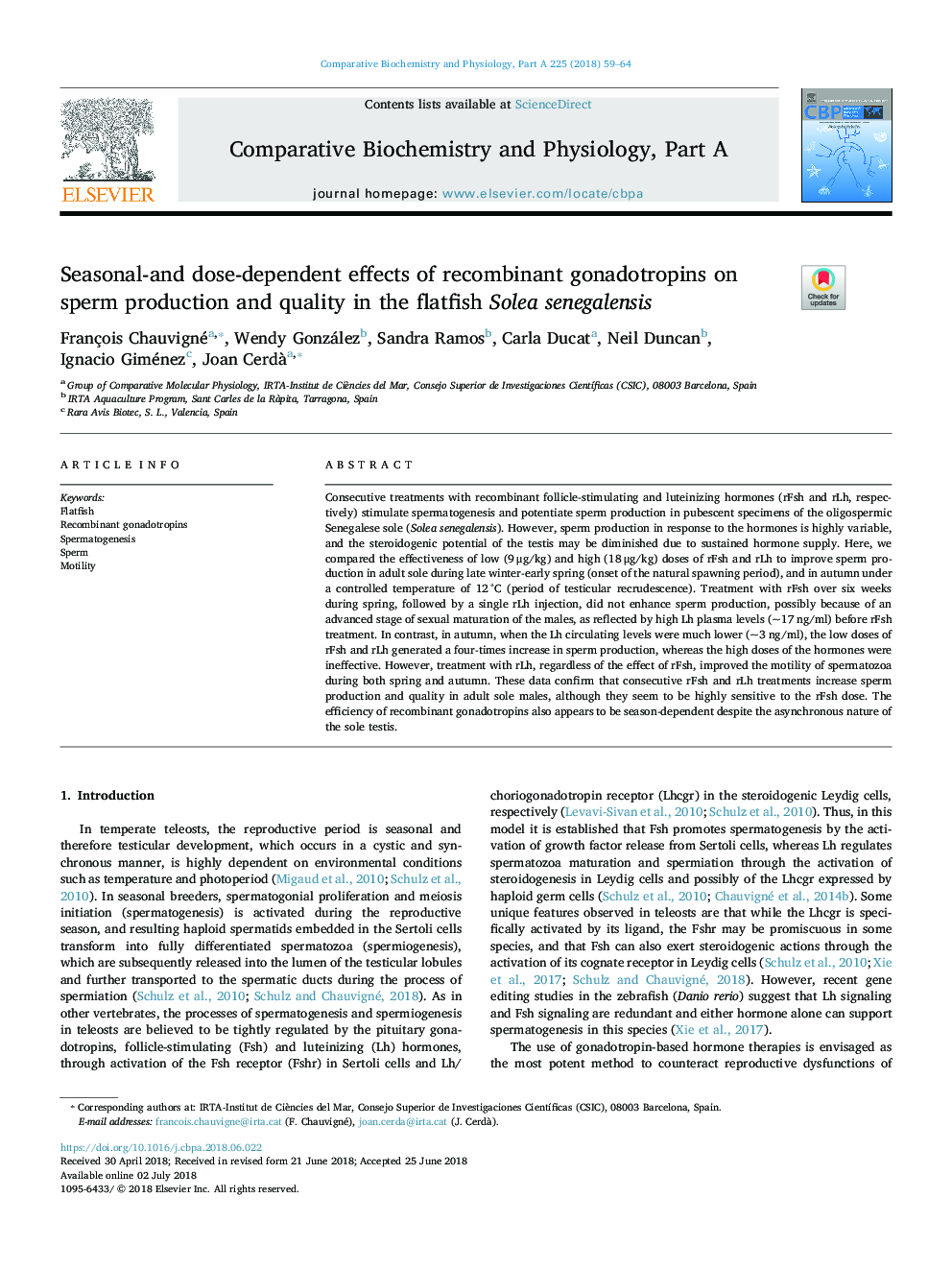| Article ID | Journal | Published Year | Pages | File Type |
|---|---|---|---|---|
| 8318049 | Comparative Biochemistry and Physiology Part A: Molecular & Integrative Physiology | 2018 | 6 Pages |
Abstract
Consecutive treatments with recombinant follicle-stimulating and luteinizing hormones (rFsh and rLh, respectively) stimulate spermatogenesis and potentiate sperm production in pubescent specimens of the oligospermic Senegalese sole (Solea senegalensis). However, sperm production in response to the hormones is highly variable, and the steroidogenic potential of the testis may be diminished due to sustained hormone supply. Here, we compared the effectiveness of low (9â¯Î¼g/kg) and high (18â¯Î¼g/kg) doses of rFsh and rLh to improve sperm production in adult sole during late winter-early spring (onset of the natural spawning period), and in autumn under a controlled temperature of 12â¯Â°C (period of testicular recrudescence). Treatment with rFsh over six weeks during spring, followed by a single rLh injection, did not enhance sperm production, possibly because of an advanced stage of sexual maturation of the males, as reflected by high Lh plasma levels (~17â¯ng/ml) before rFsh treatment. In contrast, in autumn, when the Lh circulating levels were much lower (~3â¯ng/ml), the low doses of rFsh and rLh generated a four-times increase in sperm production, whereas the high doses of the hormones were ineffective. However, treatment with rLh, regardless of the effect of rFsh, improved the motility of spermatozoa during both spring and autumn. These data confirm that consecutive rFsh and rLh treatments increase sperm production and quality in adult sole males, although they seem to be highly sensitive to the rFsh dose. The efficiency of recombinant gonadotropins also appears to be season-dependent despite the asynchronous nature of the sole testis.
Related Topics
Life Sciences
Biochemistry, Genetics and Molecular Biology
Biochemistry
Authors
François Chauvigné, Wendy González, Sandra Ramos, Carla Ducat, Neil Duncan, Ignacio Giménez, Joan Cerdà ,
